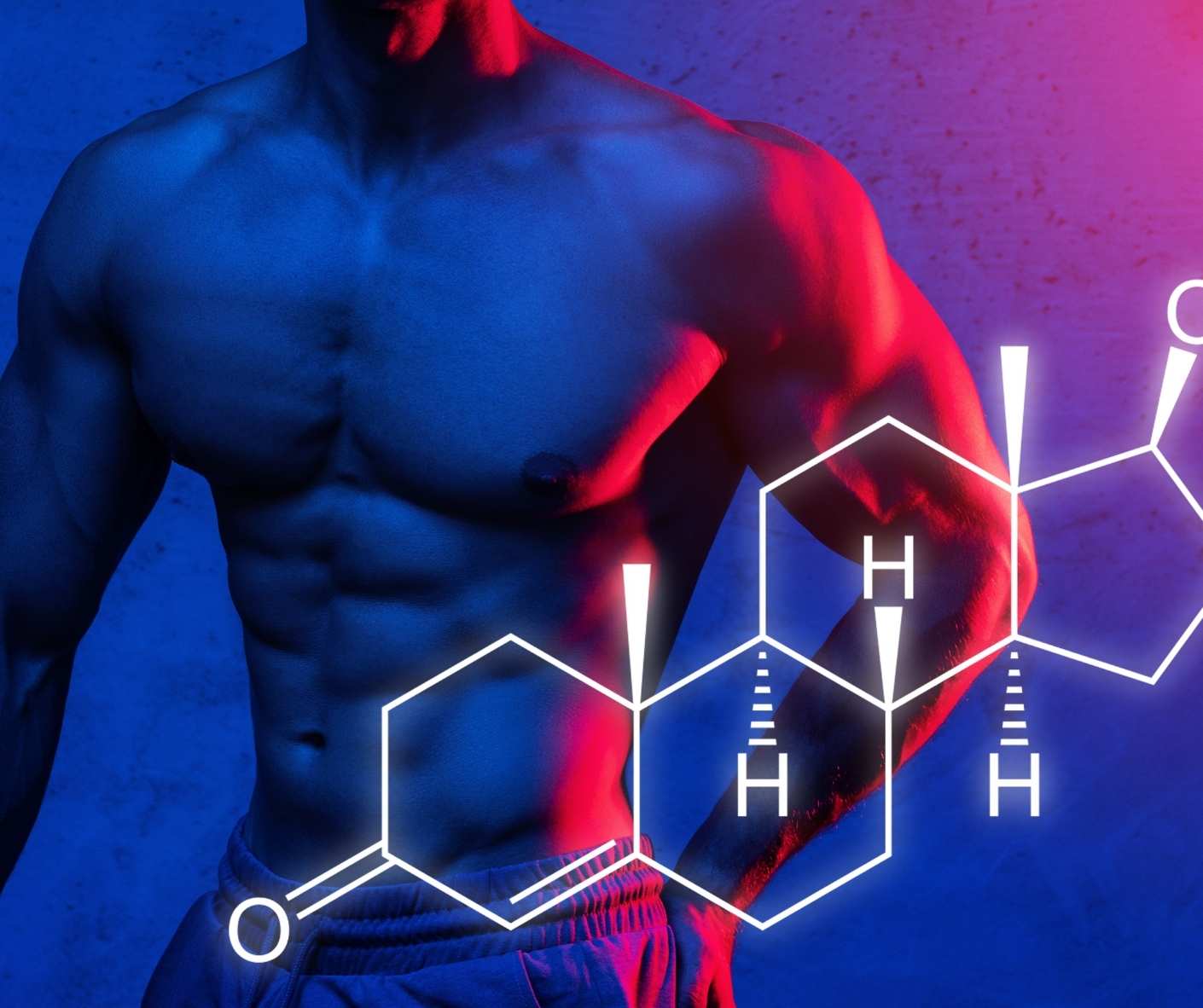Peptide Therapy Explained: Beyond Sermorelin to the Cutting Edge
Welcome to the fascinating world of peptide therapy, where tiny chains of amino acids are revolutionizing human optimization in ways that would make traditional hormone therapy look like using a sledgehammer when you need a precision instrument. If hormones are the body's chemical messengers, peptides are like specialized consultants who show up, do very specific jobs extremely well, then disappear without causing a scene.
Here's what makes peptides so intriguing: they're naturally occurring in your body, incredibly specific in their actions, and often produce remarkable results with minimal side effects. It's like having access to your body's own upgrade system, if you know the right codes to input.
But here's the catch that makes peptide therapy both exciting and complex: there are hundreds of different peptides, each with specific functions, optimal dosing protocols, and unique considerations. It's not as simple as "take this and feel better" – it's more like learning to conduct an orchestra where each instrument (peptide) has its own role in creating the symphony of optimization.
In this comprehensive guide, we'll explore the world of peptide therapy from the well-established options like sermorelin to the cutting-edge compounds that are pushing the boundaries of human enhancement. We'll cover what peptides are, how they work, which ones are worth considering, and how to use them safely and effectively.
Understanding Peptides: The Basics
Before diving into specific peptides, it's crucial to understand what peptides are and how they differ from other optimization compounds.
What Are Peptides?
Peptides are short chains of amino acids that serve as signaling molecules in the body.
Key characteristics include: naturally occurring in the human body, composed of 2-50 amino acids, highly specific biological functions, relatively short half-lives, and minimal side effects when used properly.
Think of peptides as biological software updates that tell your cells how to function more optimally.
How Peptides Work
Peptides work by binding to specific receptors and triggering targeted biological responses.
Mechanisms of action include: receptor binding and activation, cellular signaling pathway stimulation, gene expression modification, and protein synthesis enhancement.
This specificity allows for targeted optimization without broad systemic effects.
Peptides vs. Hormones
While both are signaling molecules, peptides and hormones have important differences.
Key differences include: peptides are generally more specific, hormones often have broader effects, peptides typically have shorter half-lives, and peptides usually have fewer side effects.
This makes peptides attractive for targeted optimization goals.
Natural vs. Synthetic Peptides
Most therapeutic peptides are synthetic versions of naturally occurring compounds.
Synthetic advantages include: consistent potency and purity, longer shelf life, precise dosing capabilities, and improved stability.
Synthetic peptides are typically identical to natural versions but more practical for therapeutic use.
Growth Hormone Releasing Peptides
The most well-known and studied peptides are those that stimulate growth hormone release.
Sermorelin: The Gateway Peptide
Sermorelin is often the first peptide people encounter and for good reason.
Sermorelin benefits include: natural growth hormone stimulation, improved sleep quality, enhanced recovery, increased lean muscle mass, and better skin and hair quality.
Sermorelin works by stimulating the pituitary gland to release growth hormone naturally, making it safer than direct HGH administration.
Typical dosing involves subcutaneous injection before bed, usually starting at 250-500 mcg and adjusting based on response.
Ipamorelin: The Gentle Giant
Ipamorelin is known for its gentle, consistent growth hormone stimulation.
Ipamorelin advantages include: minimal side effects, consistent GH release, no appetite stimulation, and excellent safety profile.
This peptide is often combined with sermorelin for synergistic effects.
Dosing typically ranges from 200-300 mcg, often taken 2-3 times daily.
CJC-1295: Extended Release
CJC-1295 provides longer-lasting growth hormone stimulation.
CJC-1295 benefits include: extended half-life, sustained GH elevation, convenient dosing schedule, and enhanced effectiveness when combined with other peptides.
The DAC (Drug Affinity Complex) version provides the longest duration of action.
Typical dosing is 1-2 mg twice weekly due to its extended half-life.
GHRP-2 and GHRP-6: The Powerhouses
These growth hormone releasing peptides provide potent GH stimulation.
GHRP benefits include: strong GH release, rapid results, enhanced appetite (GHRP-6), and significant muscle building effects.
However, they may cause more side effects than newer peptides.
Dosing typically ranges from 100-300 mcg, taken 2-3 times daily.
Recovery and Healing Peptides
Some of the most exciting peptides focus on accelerated healing and recovery.
BPC-157: The Healing Miracle
BPC-157 (Body Protection Compound) is renowned for its remarkable healing properties.
BPC-157 benefits include: accelerated wound healing, tendon and ligament repair, gut health improvement, neuroprotective effects, and anti-inflammatory properties.
This peptide has shown remarkable results for both acute injuries and chronic conditions.
Dosing typically ranges from 250-500 mcg daily, either injected near the injury site or taken orally.
TB-500: The Regenerator
TB-500 (Thymosin Beta-4) promotes tissue regeneration and repair.
TB-500 benefits include: enhanced tissue repair, improved flexibility, reduced inflammation, accelerated healing, and potential hair regrowth.
This peptide is particularly effective for soft tissue injuries and chronic pain conditions.
Typical dosing involves 2-5 mg twice weekly for acute issues, with lower maintenance doses for ongoing benefits.
GHK-Cu: The Anti-Aging Copper Peptide
GHK-Cu combines a peptide with copper for powerful anti-aging effects.
GHK-Cu benefits include: collagen synthesis stimulation, wound healing acceleration, antioxidant effects, hair growth promotion, and skin rejuvenation.
This peptide is popular for both systemic anti-aging and cosmetic applications.
Dosing varies widely depending on application, from topical use to systemic injection.
Metabolic and Fat Loss Peptides
Several peptides specifically target metabolism and body composition.
AOD-9604: The Fat Burner
AOD-9604 is a fragment of growth hormone specifically designed for fat loss.
AOD-9604 benefits include: targeted fat loss, preserved muscle mass, improved metabolism, and minimal side effects.
This peptide provides fat loss benefits without the other effects of growth hormone.
Typical dosing ranges from 250-500 mcg daily, often taken before exercise or bed.
Tesamorelin: The Visceral Fat Fighter
Tesamorelin specifically targets dangerous visceral abdominal fat.
Tesamorelin benefits include: visceral fat reduction, improved insulin sensitivity, enhanced cognitive function, and cardiovascular benefits.
This peptide is particularly effective for reducing belly fat that's resistant to diet and exercise.
Standard dosing is 2 mg daily via subcutaneous injection.
MOTS-c: The Mitochondrial Optimizer
MOTS-c enhances mitochondrial function and metabolic efficiency.
MOTS-c benefits include: improved insulin sensitivity, enhanced fat oxidation, increased exercise capacity, and longevity promotion.
This peptide works at the cellular level to optimize energy production.
Dosing typically ranges from 5-10 mg, taken 2-3 times weekly.
Cognitive and Neuroprotective Peptides
Emerging peptides target brain function and neuroprotection.
Noopept: The Cognitive Enhancer
Noopept provides rapid cognitive enhancement with neuroprotective benefits.
Noopept benefits include: improved memory and learning, enhanced focus and concentration, neuroprotective effects, and mood enhancement.
This peptide works quickly and is often used for acute cognitive demands.
Typical dosing ranges from 10-30 mg daily, often divided into multiple doses.
Cerebrolysin: The Brain Regenerator
Cerebrolysin contains neurotrophic factors that support brain health and regeneration.
Cerebrolysin benefits include: neuroprotection and repair, cognitive enhancement, stroke recovery support, and neurodegenerative disease protection.
This peptide is particularly valuable for brain injury recovery and age-related cognitive decline.
Dosing typically involves 5-10 ml injections, often in cycles.
Dihexa: The Memory Enhancer
Dihexa promotes the growth of new neural connections.
Dihexa benefits include: enhanced memory formation, improved learning capacity, neuroprotective effects, and potential Alzheimer's prevention.
This peptide is still experimental but shows remarkable promise for cognitive enhancement.
Research dosing ranges from 0.1-1 mg, but human protocols are still being established.
Longevity and Anti-Aging Peptides
Several peptides specifically target aging processes and longevity.
Epithalon: The Telomere Protector
Epithalon may help protect and lengthen telomeres, potentially slowing aging.
Epithalon benefits include: telomere protection, improved sleep quality, enhanced immune function, and potential life extension.
This peptide targets fundamental aging mechanisms at the cellular level.
Typical protocols involve 5-10 mg daily for 10-20 days, repeated several times yearly.
Humanin: The Mitochondrial Protector
Humanin protects mitochondria and may extend lifespan.
Humanin benefits include: mitochondrial protection, neuroprotection, metabolic enhancement, and longevity promotion.
This peptide addresses age-related mitochondrial dysfunction.
Research is ongoing, but typical dosing ranges from 2-10 mg several times weekly.
FOXO4-DRI: The Senescent Cell Eliminator
FOXO4-DRI targets and eliminates senescent (aged) cells.
FOXO4-DRI benefits include: senescent cell removal, tissue rejuvenation, improved organ function, and potential life extension.
This represents a cutting-edge approach to anti-aging therapy.
This peptide is still largely experimental with limited human data.
Peptide Combinations and Stacking
Many users combine multiple peptides for synergistic effects.
Growth Hormone Stacks
Combining different GH-releasing peptides can enhance effectiveness.
Popular combinations include: sermorelin + ipamorelin for balanced GH release, CJC-1295 + ipamorelin for extended action, and GHRP-2 + CJC-1295 for maximum potency.
Stacking allows for more comprehensive growth hormone optimization.
Recovery and Healing Stacks
Combining healing peptides can accelerate recovery from injuries.
Effective combinations include: BPC-157 + TB-500 for comprehensive tissue repair, GHK-Cu + BPC-157 for enhanced healing, and growth hormone peptides + healing peptides for maximum recovery.
These combinations are particularly popular among athletes and active individuals.
Anti-Aging and Longevity Stacks
Multiple peptides can target different aspects of aging simultaneously.
Longevity combinations include: epithalon + growth hormone peptides, MOTS-c + metabolic peptides, and neuroprotective peptides + cognitive enhancers.
These stacks aim for comprehensive anti-aging effects.
Stacking Considerations
Combining peptides requires careful consideration of interactions and effects.
Stacking factors include: potential interactions between peptides, cumulative side effects, dosing timing and coordination, and monitoring requirements.
Start with single peptides before progressing to combinations.
Administration and Dosing
Proper administration is crucial for peptide effectiveness and safety.
Injection Techniques
Most peptides require subcutaneous injection for optimal absorption.
Injection considerations include: proper needle size and technique, rotation of injection sites, sterile preparation and administration, and proper storage of reconstituted peptides.
Good injection technique minimizes discomfort and maximizes effectiveness.
Timing and Frequency
Optimal timing varies significantly between different peptides.
Timing factors include: circadian rhythm considerations, food and exercise interactions, half-life and duration of action, and combination with other treatments.
Follow specific timing recommendations for each peptide.
Dosing Protocols
Peptide dosing is highly individual and goal-dependent.
Dosing considerations include: starting with lower doses, gradually increasing based on response, cycling protocols for some peptides, and adjusting for individual factors.
Work with knowledgeable providers to optimize dosing.
Storage and Handling
Proper storage is essential for maintaining peptide potency.
Storage requirements include: refrigeration of reconstituted peptides, protection from light and heat, proper mixing techniques, and attention to expiration dates.
Improper storage can render peptides ineffective.
Safety and Side Effects
While generally well-tolerated, peptides can have side effects and contraindications.
Common Side Effects
Most peptide side effects are mild and temporary.
Common side effects include: injection site reactions, temporary fatigue or drowsiness, mild headaches, and water retention with some peptides.
Most side effects resolve with continued use or dose adjustment.
Serious Considerations
Some peptides require careful monitoring and have contraindications.
Serious considerations include: cancer history contraindications for growth hormone peptides, blood sugar effects with some peptides, cardiovascular considerations, and potential drug interactions.
Comprehensive health assessment is important before starting peptides.
Quality and Purity Concerns
Peptide quality varies significantly between sources.
Quality factors include: purity testing and verification, proper manufacturing standards, legitimate pharmacy sources, and avoiding research chemical suppliers.
Poor quality peptides can be ineffective or dangerous.
Monitoring and Safety Protocols
Regular monitoring helps ensure safe and effective peptide use.
Monitoring includes: regular blood work and health assessments, tracking of benefits and side effects, periodic evaluation of goals and protocols, and professional oversight when appropriate.
Don't use peptides without proper monitoring and support.
Legal and Regulatory Status
The legal status of peptides varies by compound and jurisdiction.
FDA Approved Peptides
Some peptides have FDA approval for specific medical conditions.
Approved peptides include: sermorelin for growth hormone deficiency, tesamorelin for HIV-associated lipodystrophy, and various peptides for specific medical conditions.
FDA-approved peptides are available through traditional medical channels.
Compounding Pharmacy Peptides
Many peptides are available through compounding pharmacies with prescriptions.
Compounding considerations include: prescription requirements, quality standards, regulatory oversight, and legitimate medical use.
This represents the safest and most legal approach for most peptides.
Research Chemical Concerns
Many peptides are sold as "research chemicals" with significant risks.
Research chemical risks include: unknown purity and potency, lack of regulatory oversight, potential contamination, and legal gray areas.
Avoid research chemical sources for therapeutic use.
International Considerations
Peptide regulations vary significantly between countries.
International factors include: varying legal status, import/export restrictions, prescription requirements, and quality standards.
Understand local regulations before obtaining or using peptides.
Choosing the Right Peptides
Selecting appropriate peptides depends on individual goals and circumstances.
Goal-Based Selection
Different peptides are optimal for different optimization goals.
Goal-based choices include: growth hormone peptides for anti-aging and muscle building, healing peptides for injury recovery, metabolic peptides for fat loss, and cognitive peptides for brain enhancement.
Match peptide selection to your primary goals.
Individual Factors
Personal factors influence peptide selection and dosing.
Individual considerations include: age and health status, previous treatment history, lifestyle and schedule factors, and budget and accessibility.
Personalize peptide protocols based on individual circumstances.
Risk Tolerance
Different peptides carry different risk profiles.
Risk considerations include: established safety data, potential side effects, contraindications, and monitoring requirements.
Choose peptides that match your risk tolerance and monitoring capabilities.
Provider Expertise
Working with knowledgeable providers is crucial for peptide success.
Provider qualifications include: peptide therapy experience, comprehensive monitoring capabilities, quality sourcing, and ongoing support.
Don't attempt complex peptide protocols without proper guidance.
The Future of Peptide Therapy
Peptide therapy continues to evolve rapidly with new discoveries and applications.
Emerging Peptides
New peptides are constantly being discovered and developed.
Emerging areas include: longevity and anti-aging peptides, cognitive enhancement compounds, tissue regeneration peptides, and disease-specific treatments.
Stay informed about new developments while maintaining healthy skepticism.
Delivery Innovations
New delivery methods may improve peptide convenience and effectiveness.
Delivery innovations include: oral peptide formulations, transdermal delivery systems, sustained-release preparations, and nasal spray formulations.
These innovations may make peptide therapy more accessible and convenient.
Personalization and Precision
Future peptide therapy will likely become increasingly personalized.
Personalization trends include: genetic-based peptide selection, biomarker-guided dosing, AI-optimized protocols, and individualized combination therapies.
This will improve effectiveness while minimizing side effects.
Regulatory Evolution
Regulatory approaches to peptides will likely continue evolving.
Regulatory trends include: increased oversight and standardization, expanded approved indications, improved quality standards, and integration with mainstream medicine.
This evolution will likely improve access while ensuring safety.
Conclusion: Navigating the Peptide Landscape
Peptide therapy represents one of the most exciting frontiers in human optimization, offering targeted benefits with relatively few side effects when used properly. From the well-established growth hormone releasing peptides to cutting-edge longevity compounds, peptides provide tools for addressing specific optimization goals with precision.
The key to successful peptide therapy is approaching it with knowledge, caution, and proper support. This isn't about experimenting with random compounds – it's about strategically using well-researched peptides under appropriate guidance to achieve specific health and performance goals.
Remember that peptides are tools, not magic bullets. They work best as part of a comprehensive approach to health and optimization that includes proper nutrition, exercise, sleep, and stress management. The most powerful peptide in the world won't compensate for poor lifestyle choices.
If you're considering peptide therapy, start with the basics: work with qualified providers, choose well-researched compounds, start with conservative doses, and maintain proper monitoring. The peptide landscape can be overwhelming, but focusing on proven compounds with established safety profiles will serve you well.
Most importantly, view peptide therapy as a journey of optimization rather than a quick fix. The best results come from consistent, patient application of appropriate protocols, not from chasing the latest experimental compound.
The future of peptide therapy is bright, with new discoveries and applications emerging regularly. By staying informed, working with qualified providers, and maintaining a focus on safety and effectiveness, you can harness the power of peptides to optimize your health and performance in ways that were unimaginable just a few years ago.
Medical Disclaimer: This content is for educational purposes only and does not constitute medical advice. Peptide therapy should only be pursued under the supervision of qualified healthcare providers. Many peptides are experimental with limited safety data. Individual responses vary greatly, and peptides are not appropriate for everyone. Always prioritize safety and medical supervision over optimization goals.
Related Articles
- The Modern Man's Guide to Legitimate Hormone Optimization
- Sermorelin: The Growth Hormone Hack That Won't Break the Bank
- Advanced Hormone Optimization: Next-Level Strategies for Maximum Results
- Hormone Therapy Monitoring: Staying Safe While Optimizing Performance
- Hormone Optimization Stacking: Combining Treatments for Maximum Results





